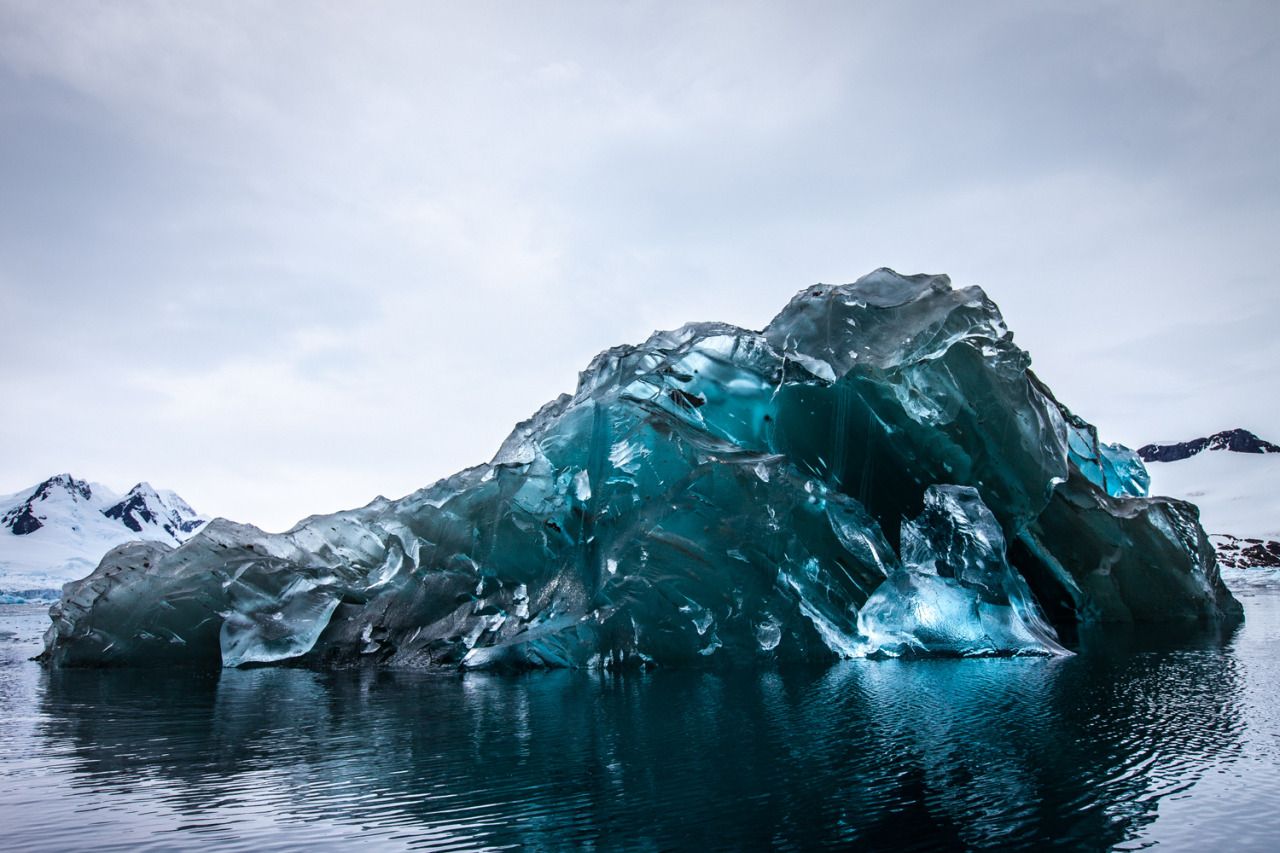But every now and then an iceberg will tumble over. Even enormous ones the size of cities, with peaks hundreds of feet tall, has flipped.
Icebergs are born when a chunk of ice breaks off from a glacier, an ice shelf or another iceberg. Ice shelves, for example, form in cold areas such as Greenland when the edge of a glacier flows over the land and floats in the water, making the ice subject to cracking.
The most likely time for an iceberg to topple is in its infancy. When a chunk breaks away, we say the glacier, shelf or iceberg has calved. After splitting away from the parent, the big icy babies may be irregularly shaped. They tip and roll as gravity pulls most of their weight underwater.
Icebergs can flip over when they break away from large glaciers, or if they melt in a way that changes their weight, causing it to tip over.
Icebergs are usually a lot bigger under the surface of the water than what you can see above it. This iceberg looks blue, in the same way, that seawater can appear blue because when the light from the Sun hits the iceberg, all the colours apart from blue are absorbed by the ice.

Unlike all the icebergs surrounding it, the otherworldly blue mountain of ice was entirely free of snow and debris, displaying a polished sky-blue surface.
About 90 percent of any iceberg lies below the surface, which makes iceberg flips an extremely rare occurrence. Saltwater is much denser than freshwater, which causes icebergs to float. But when they melt, their weight distribution can change, making it possible for some icebergs to turn over completely.
And when such a flip does occur, the consequences can be devastating. For example, larger iceberg flips can trigger tsunamis that can damage ships lying in their path.
Flipped icebergs undersides colour can vary from blue to green because the ice absorbs red light and reflects blue. They will keep that colour for the rest of their lives.
